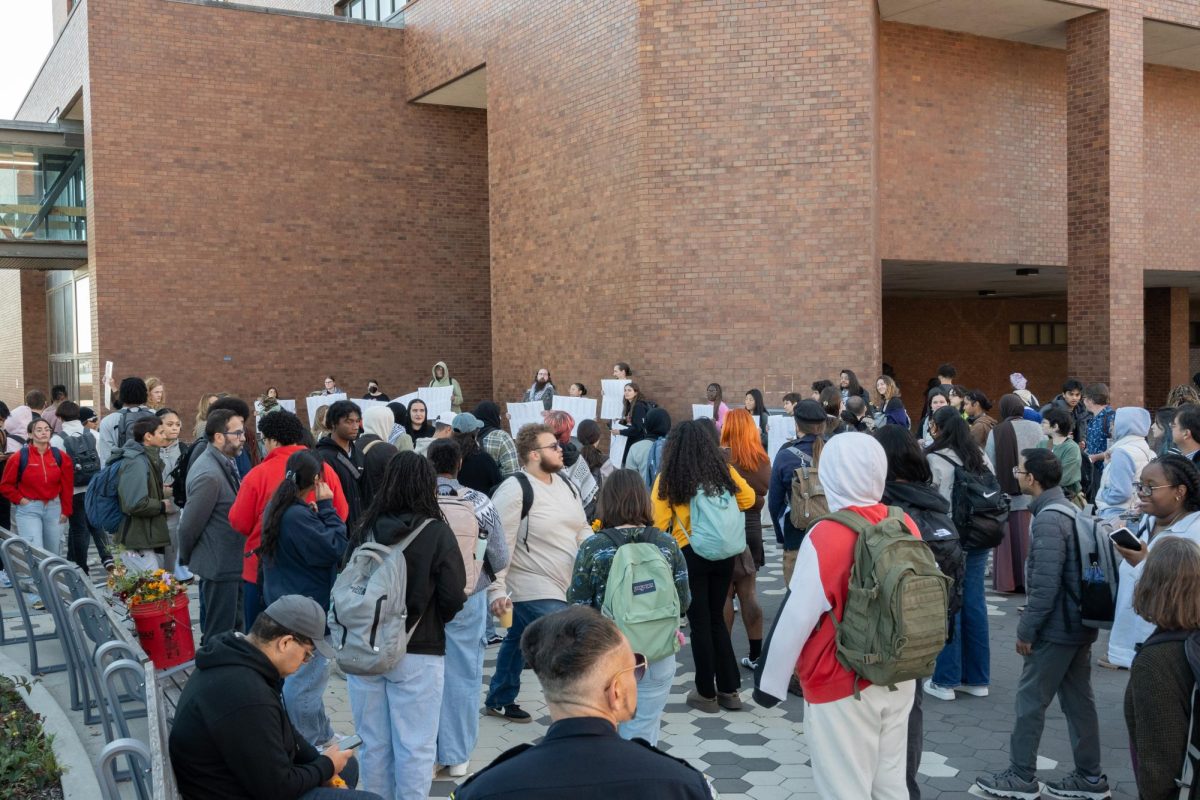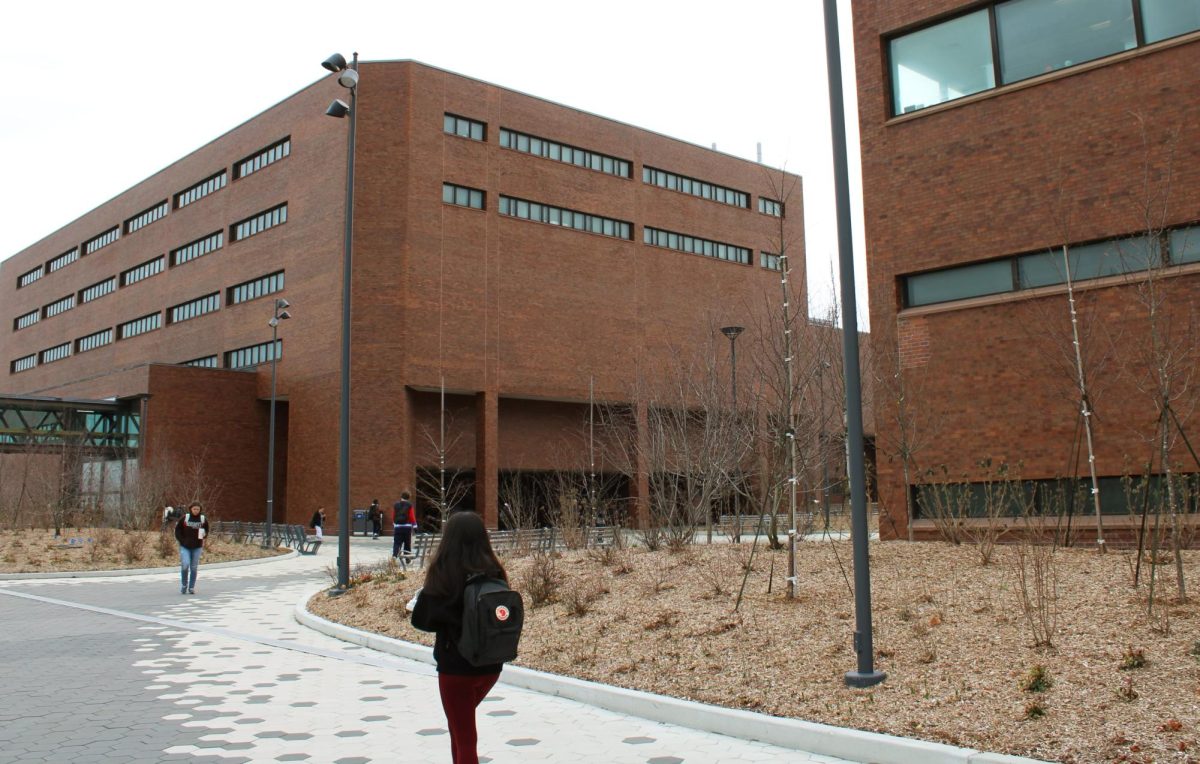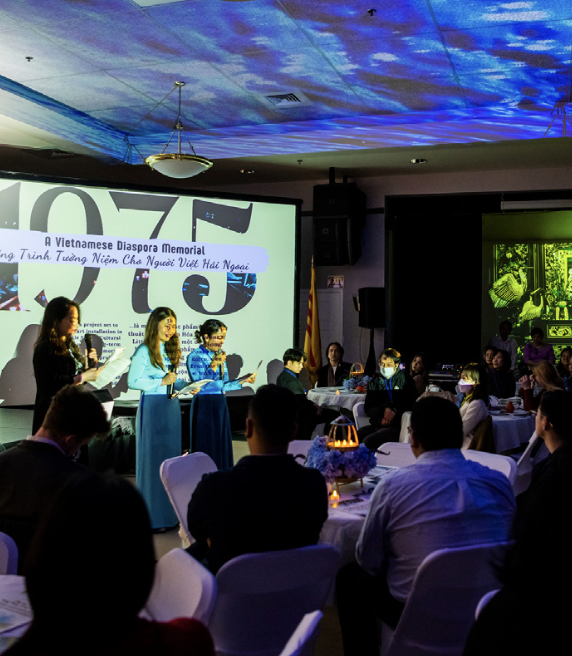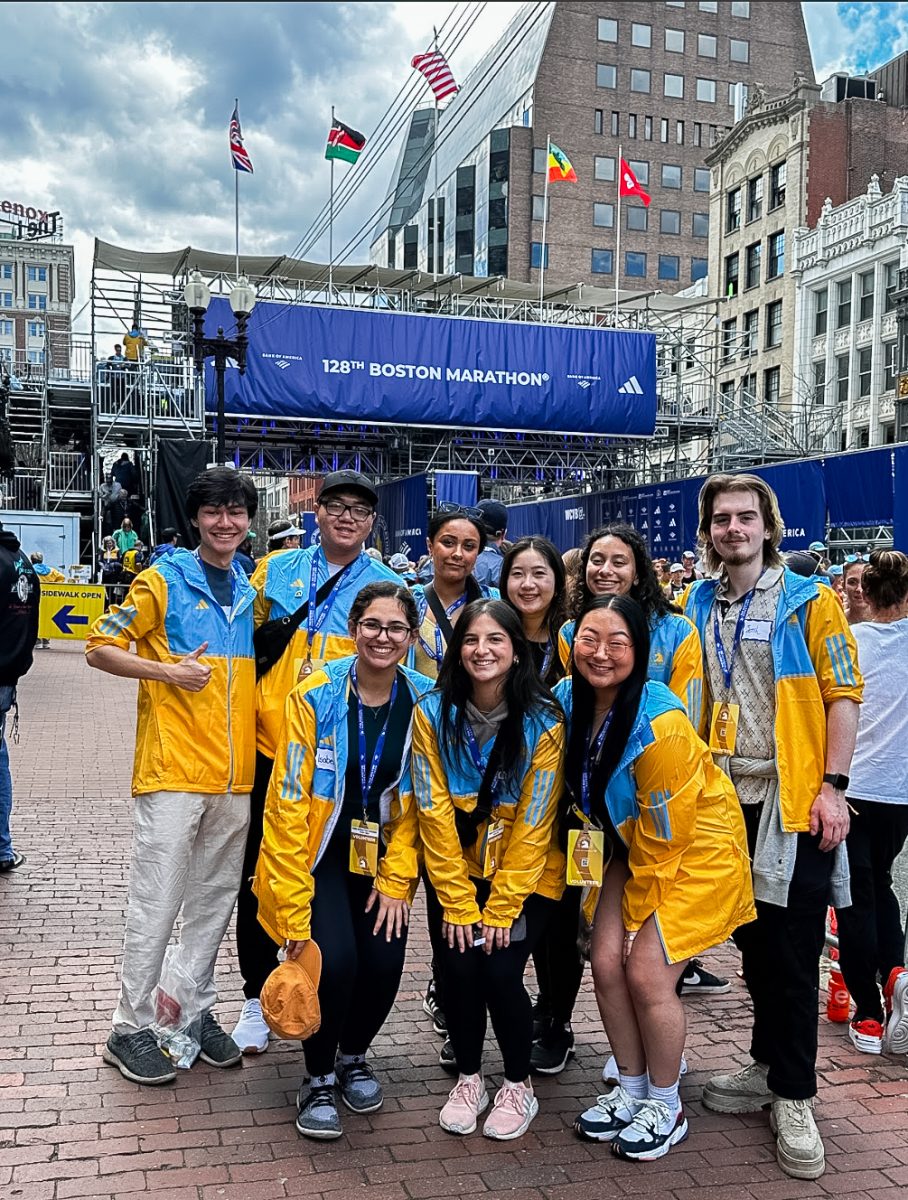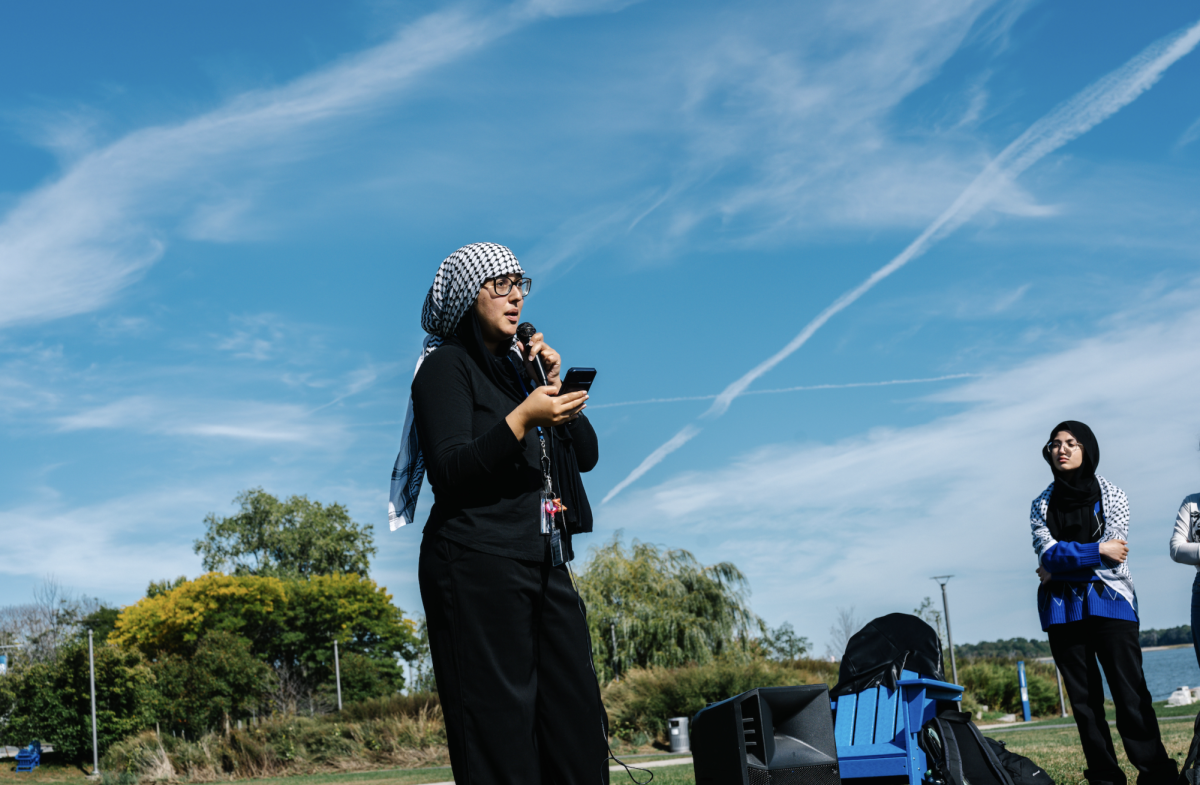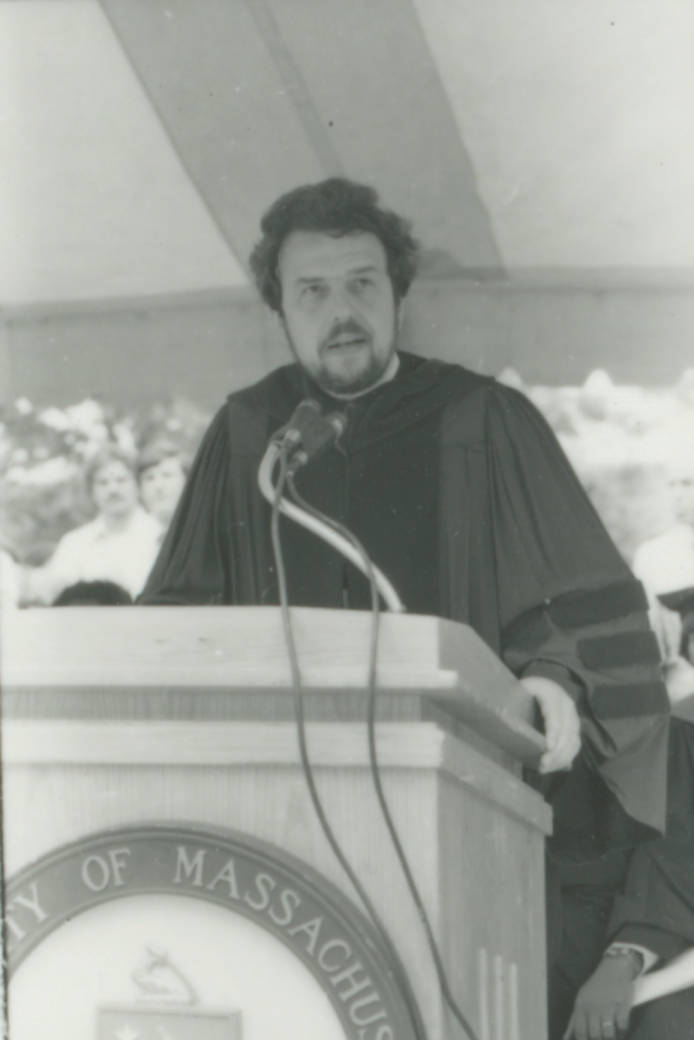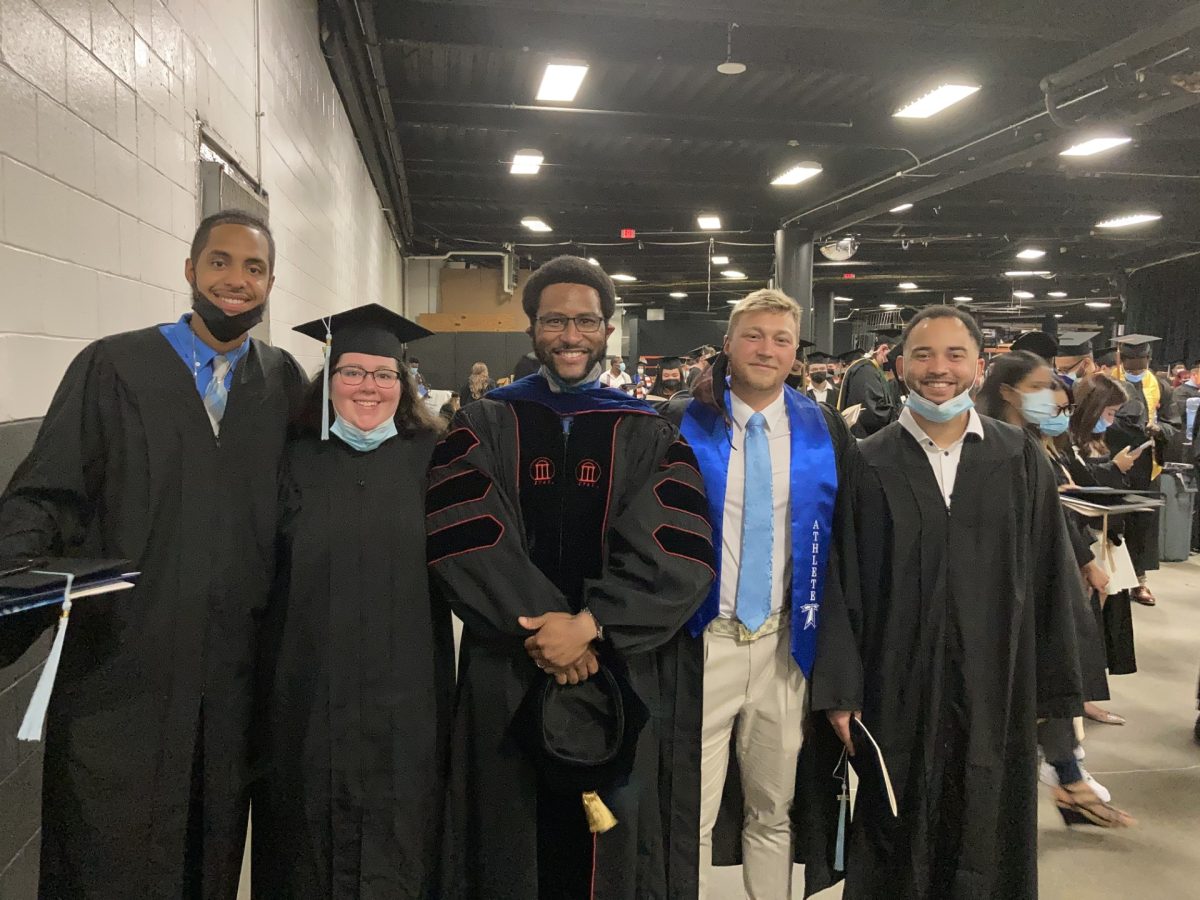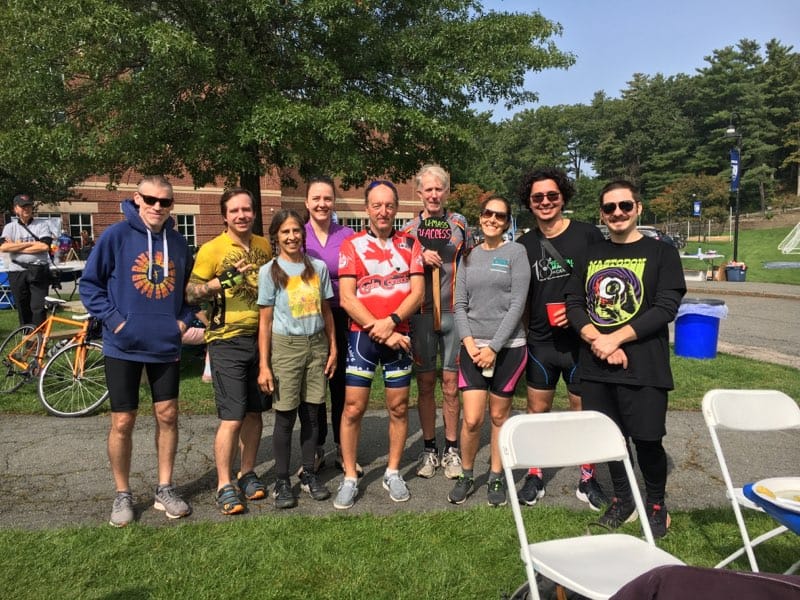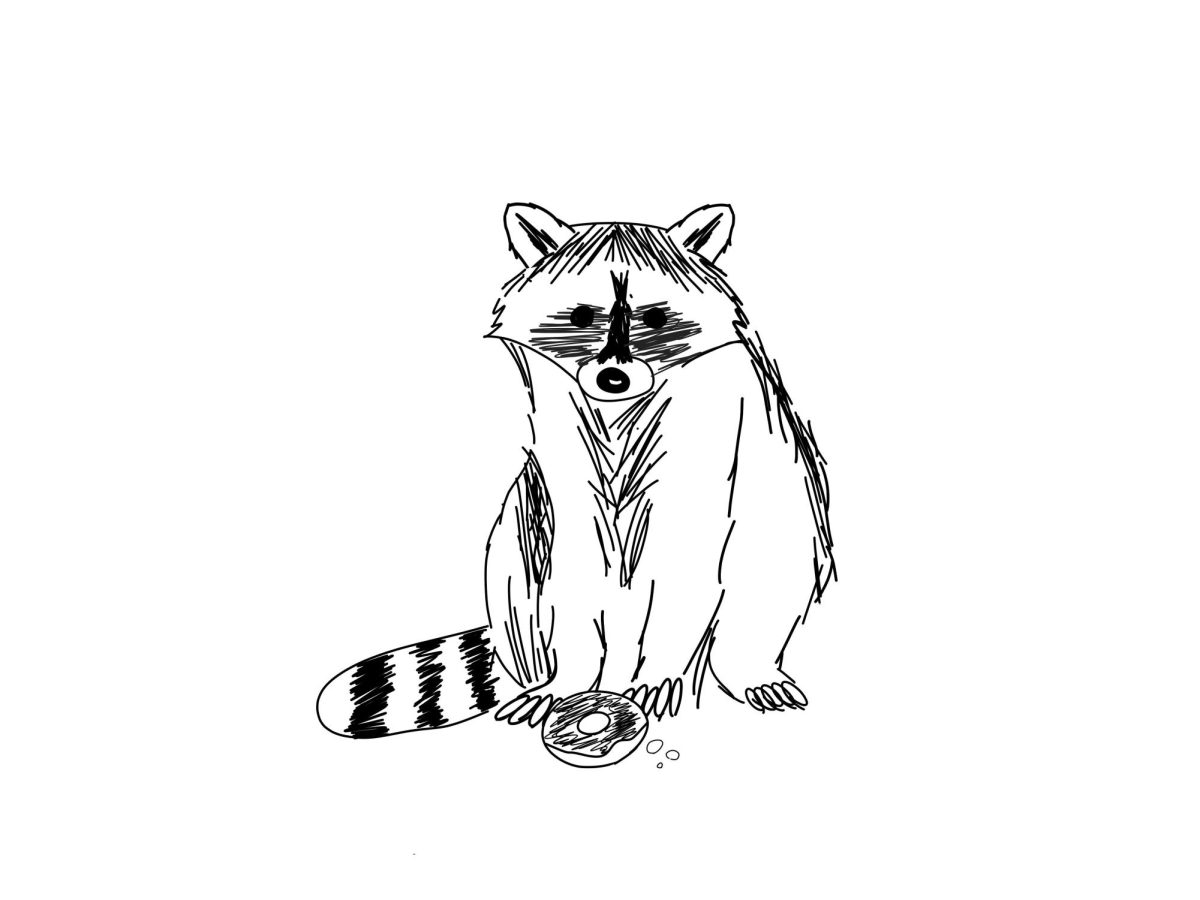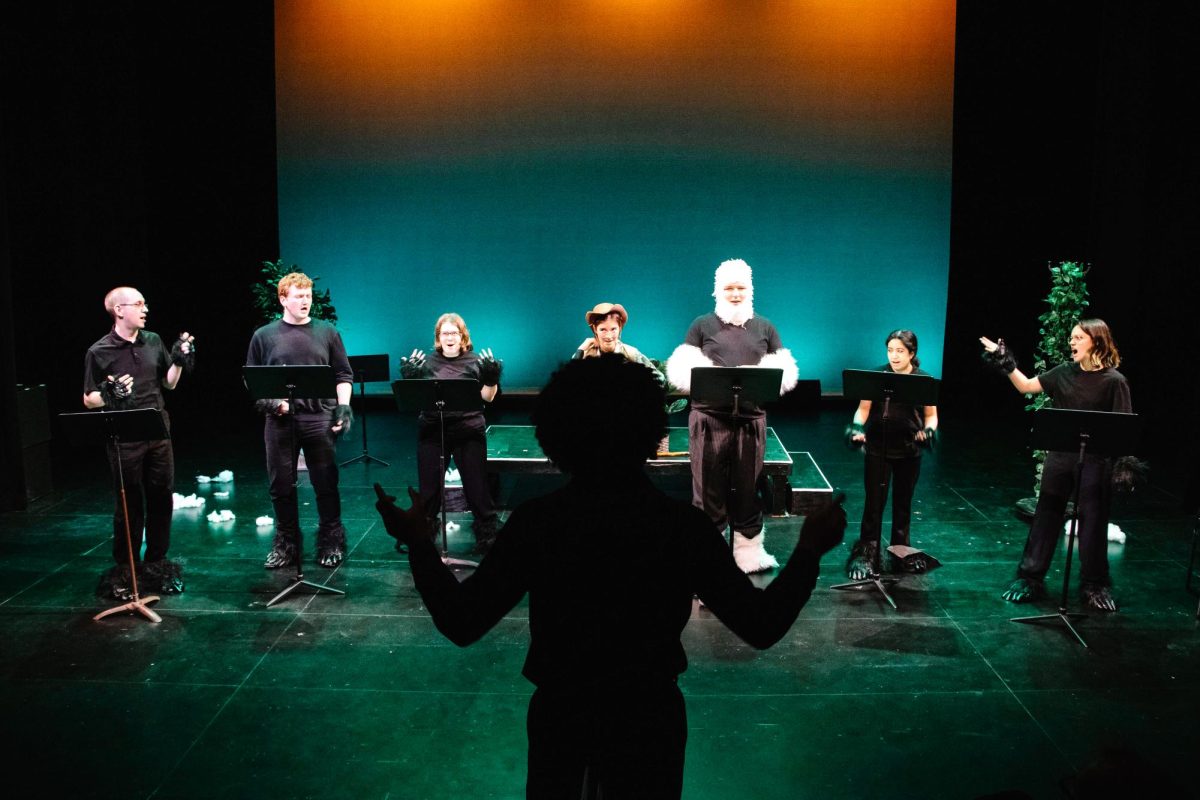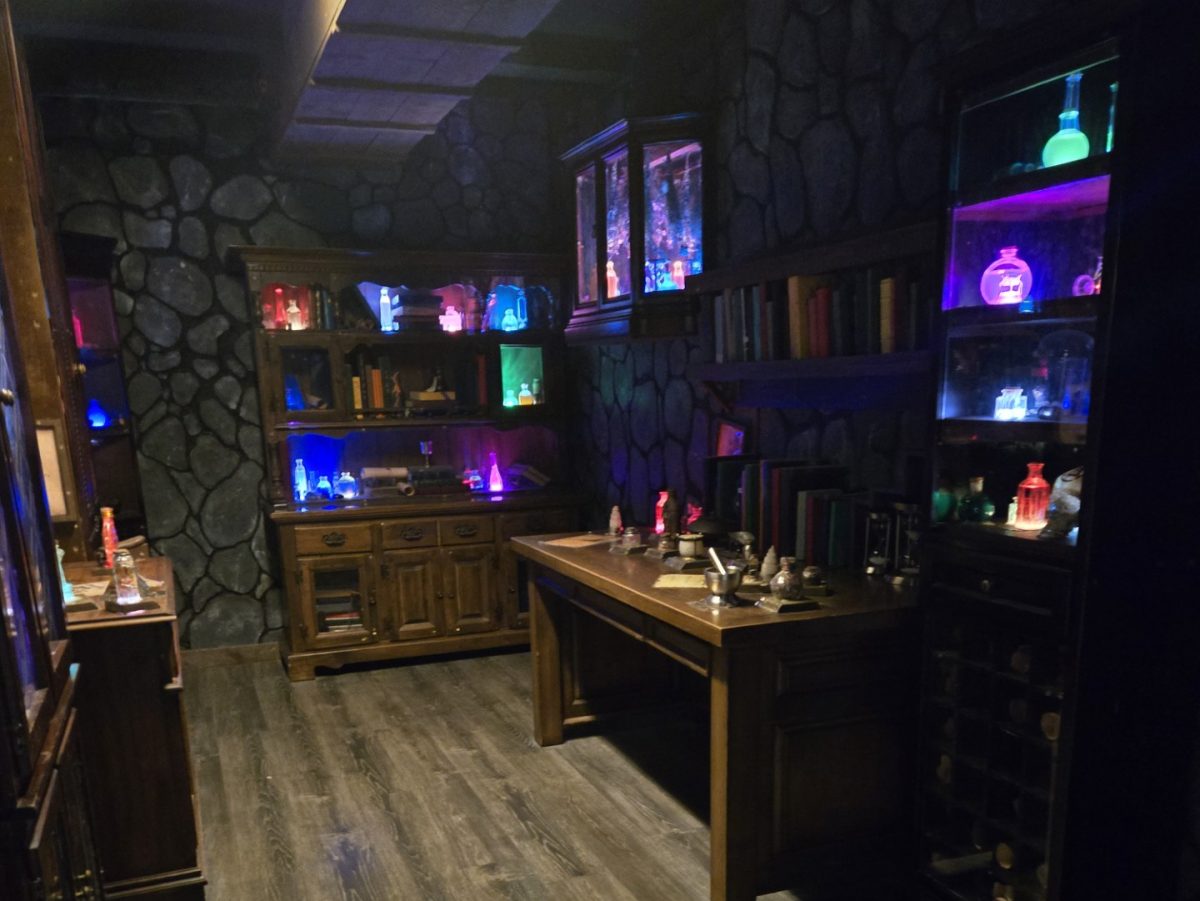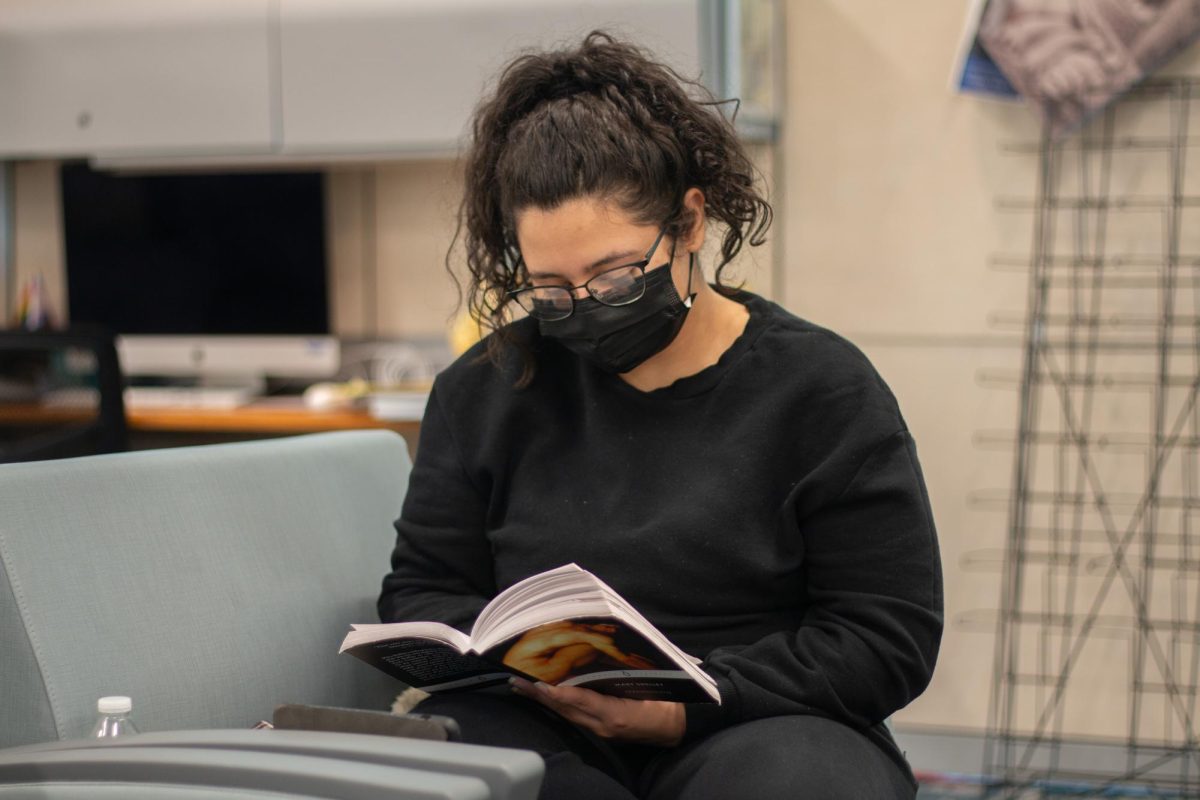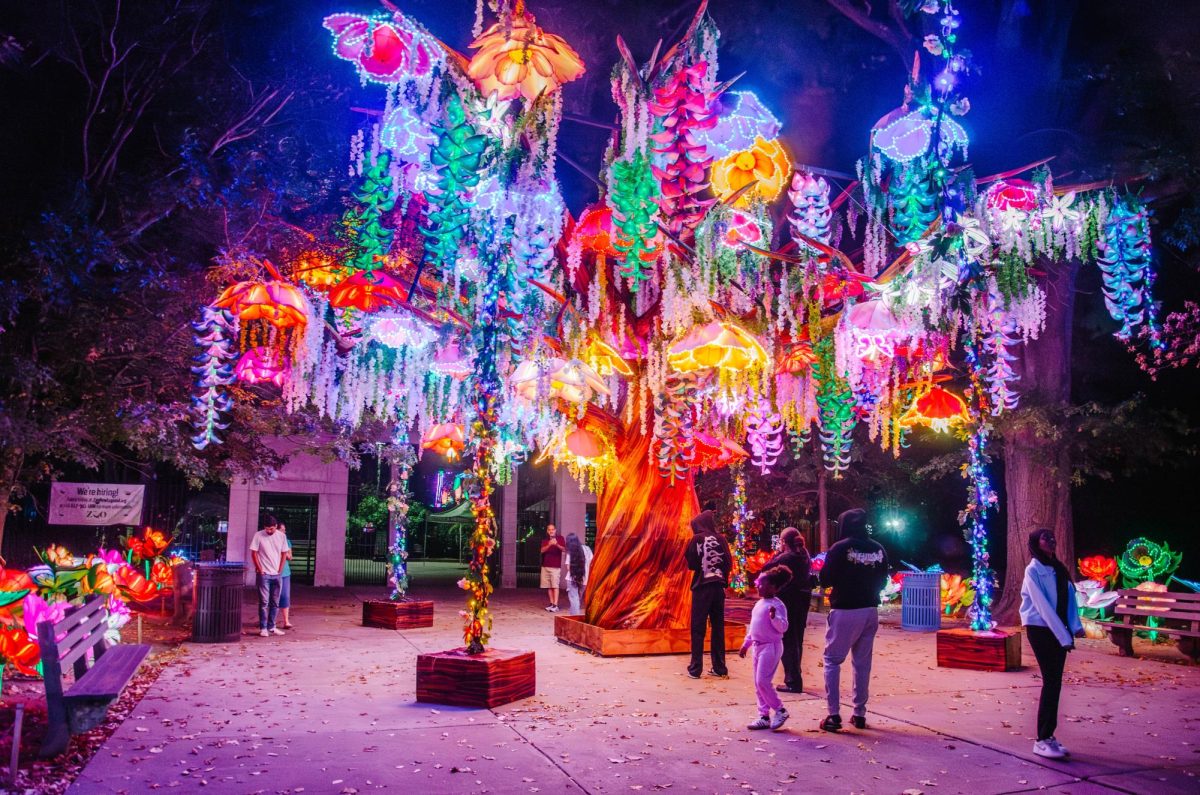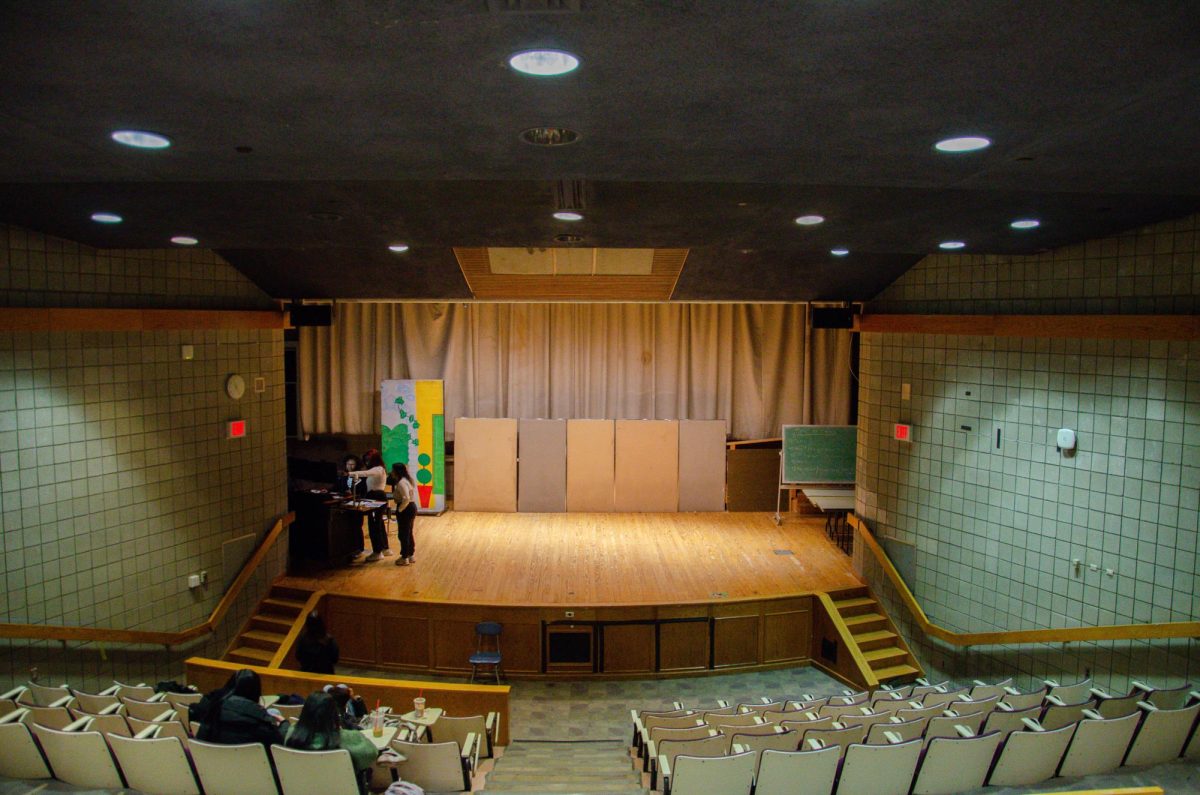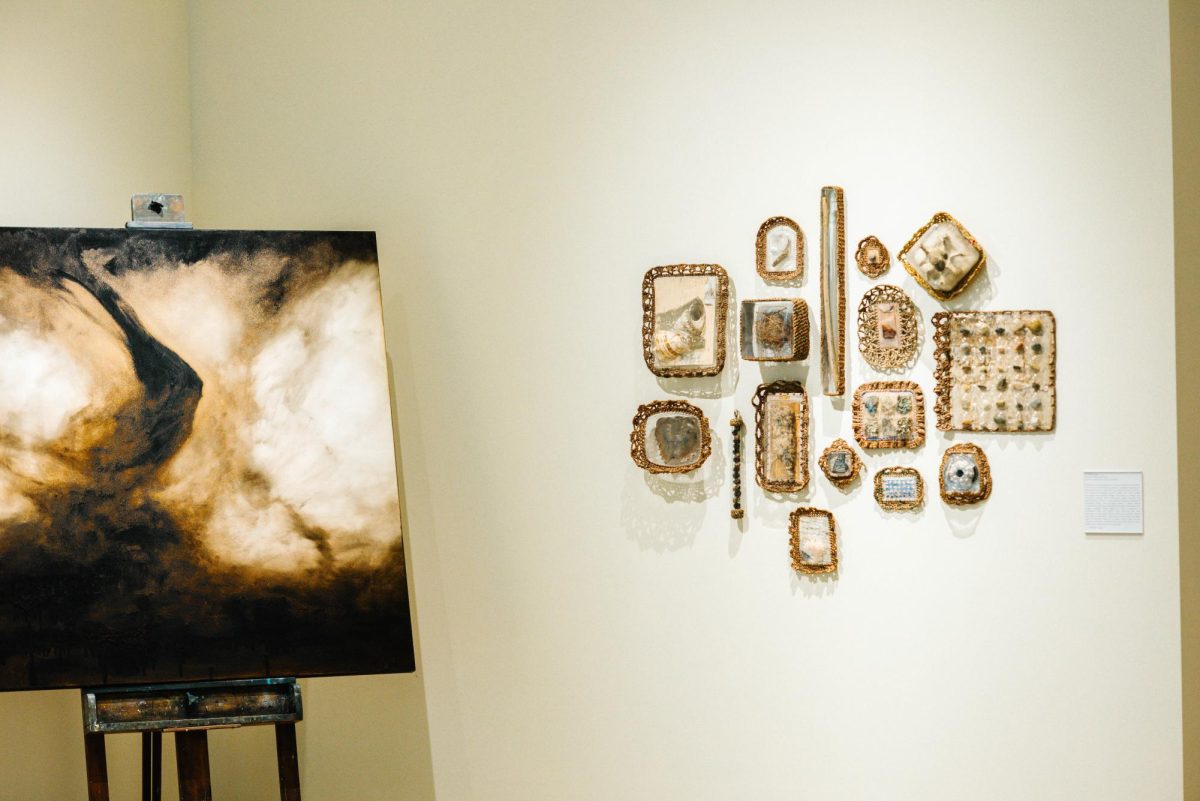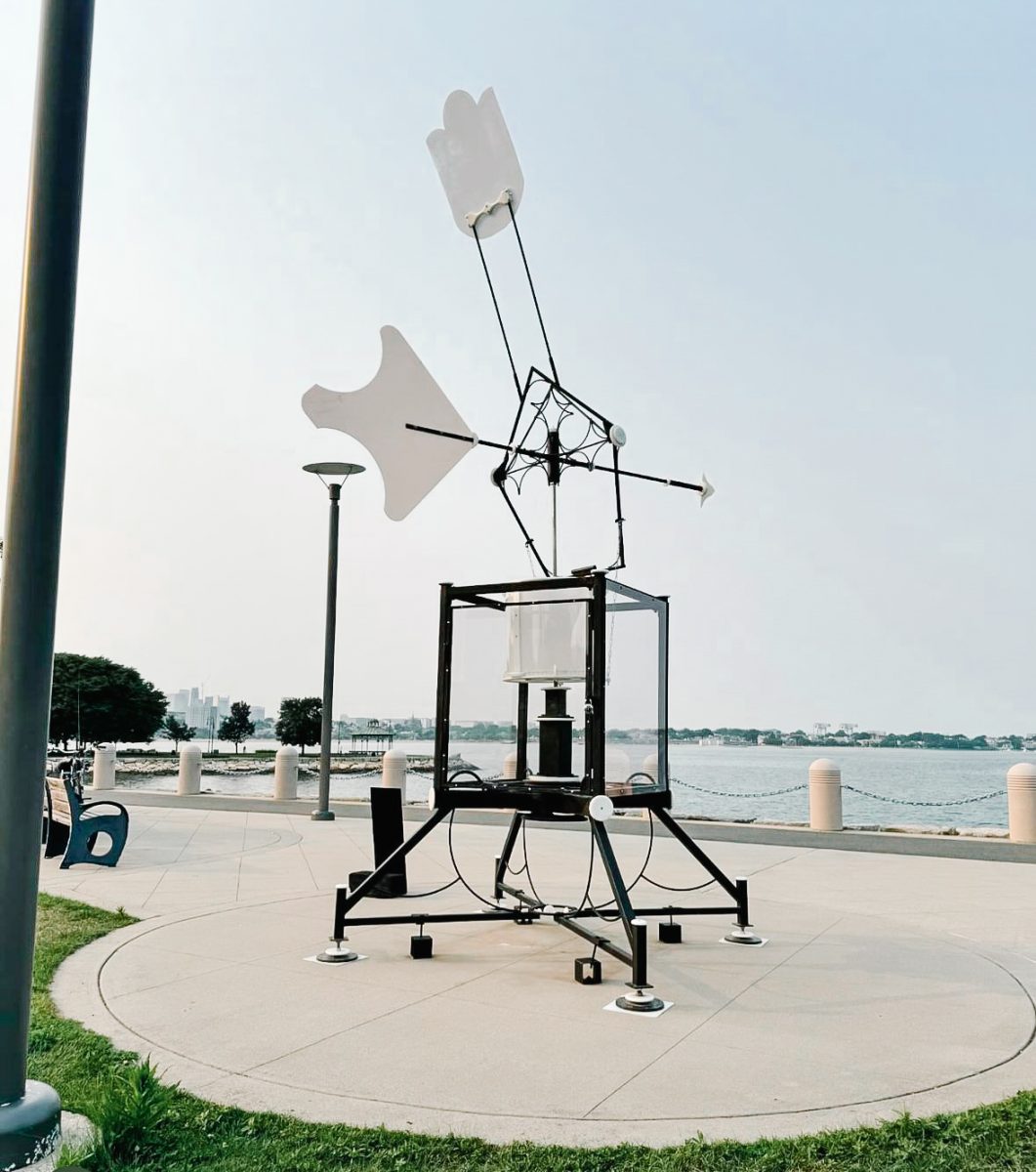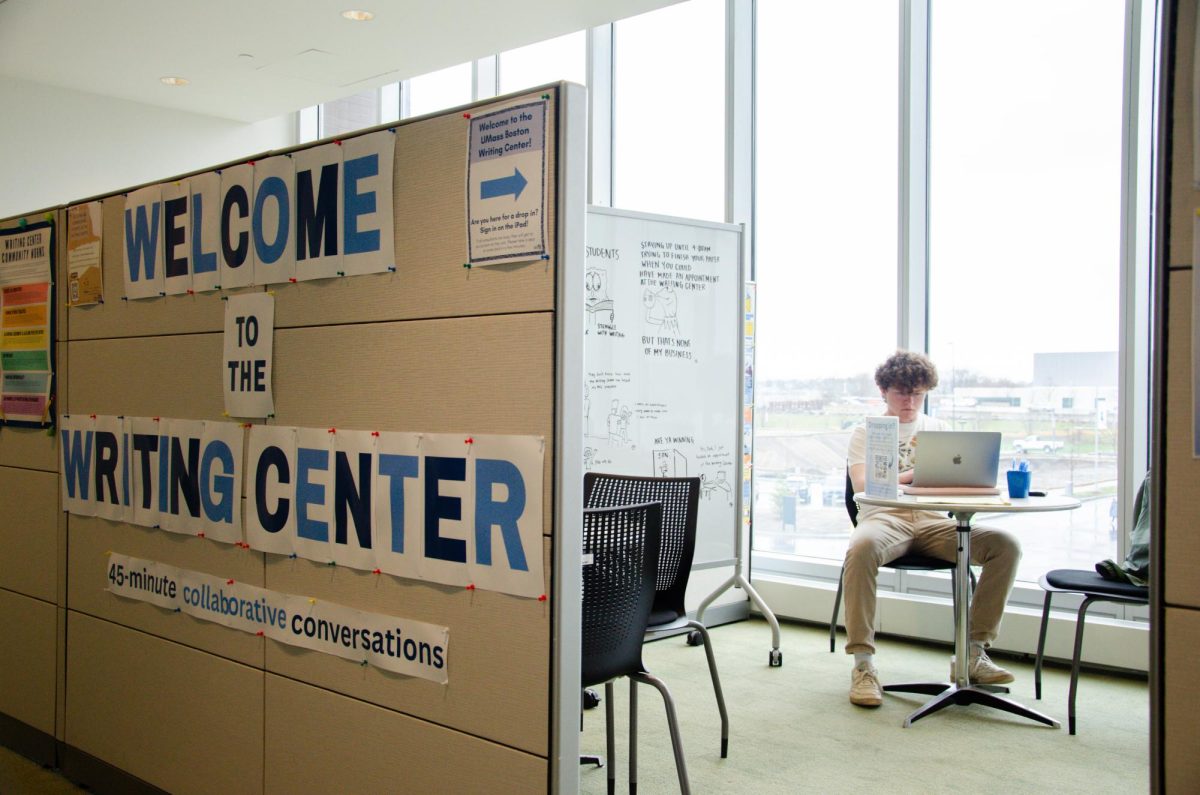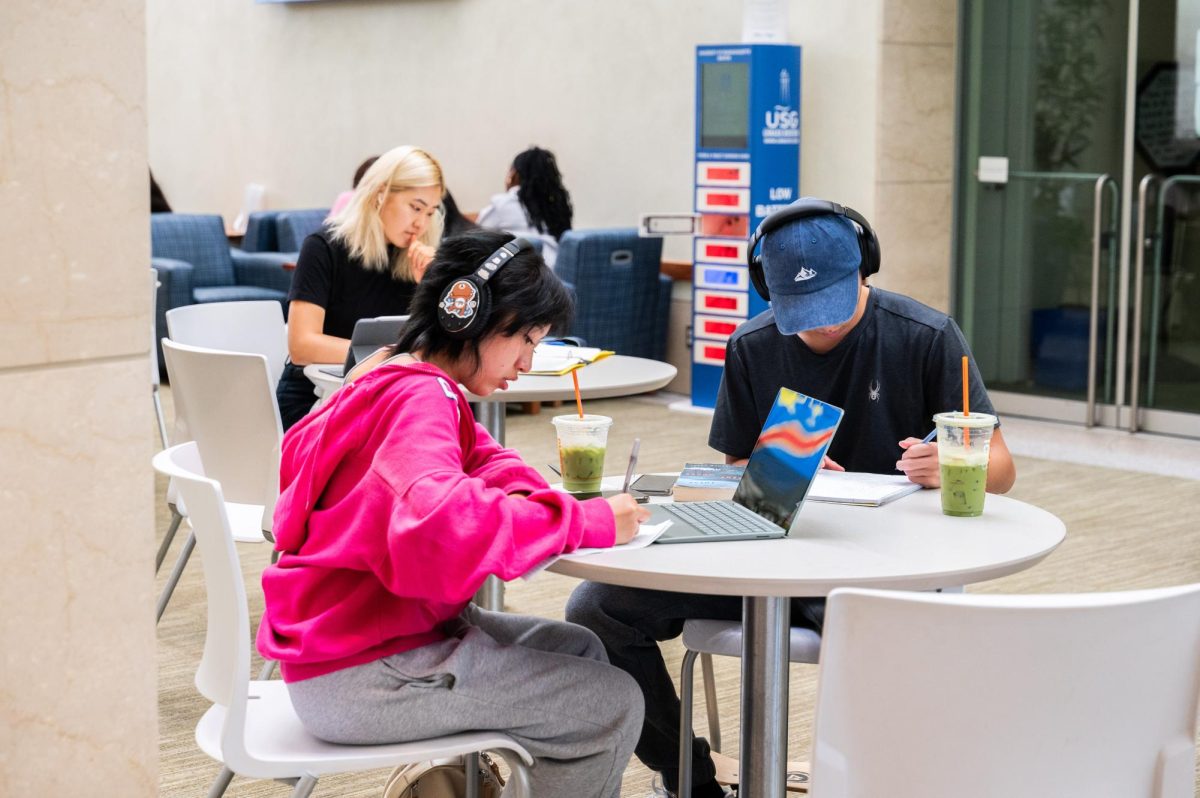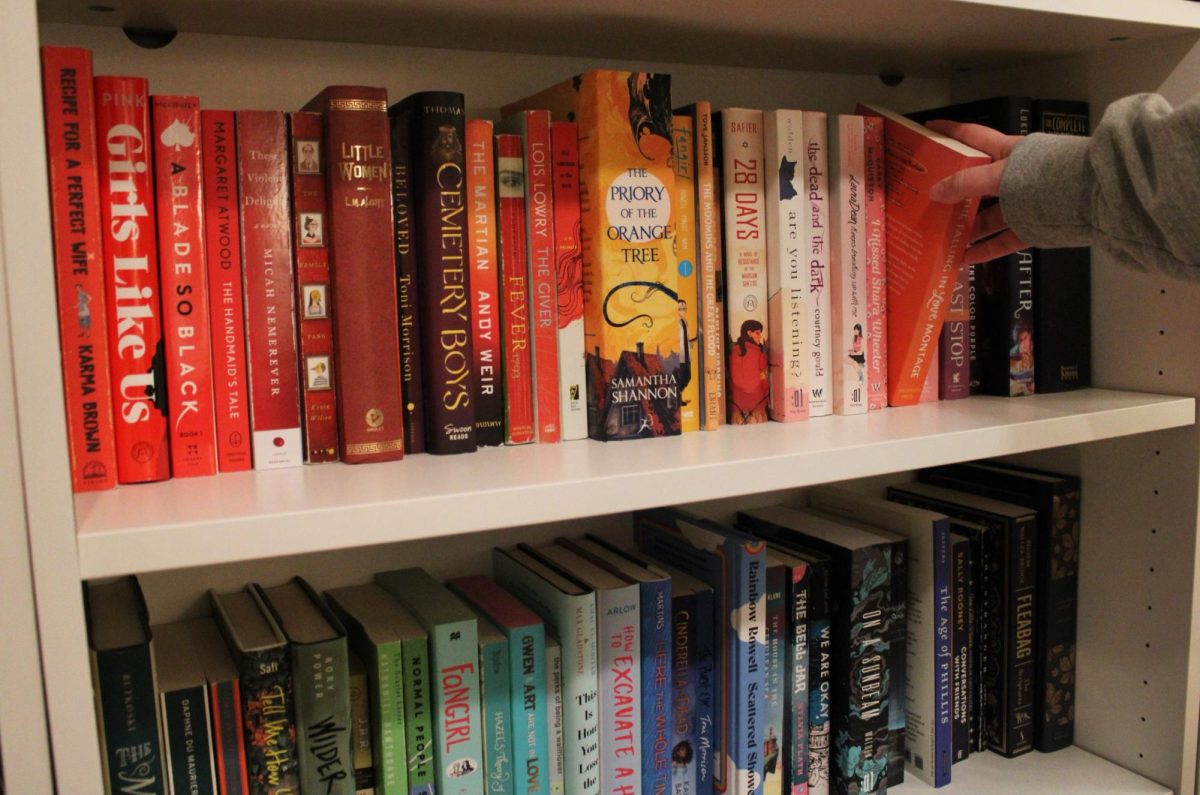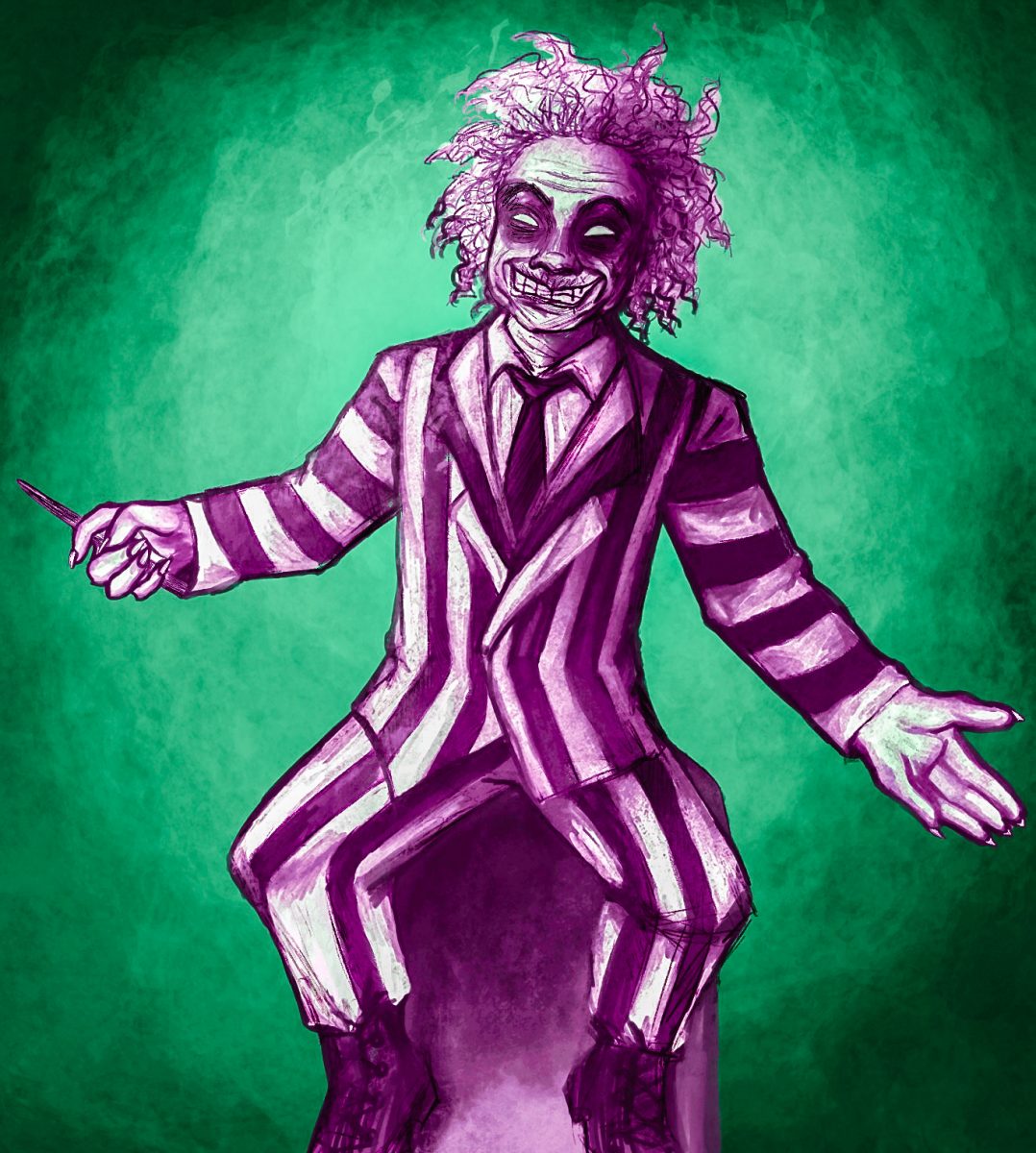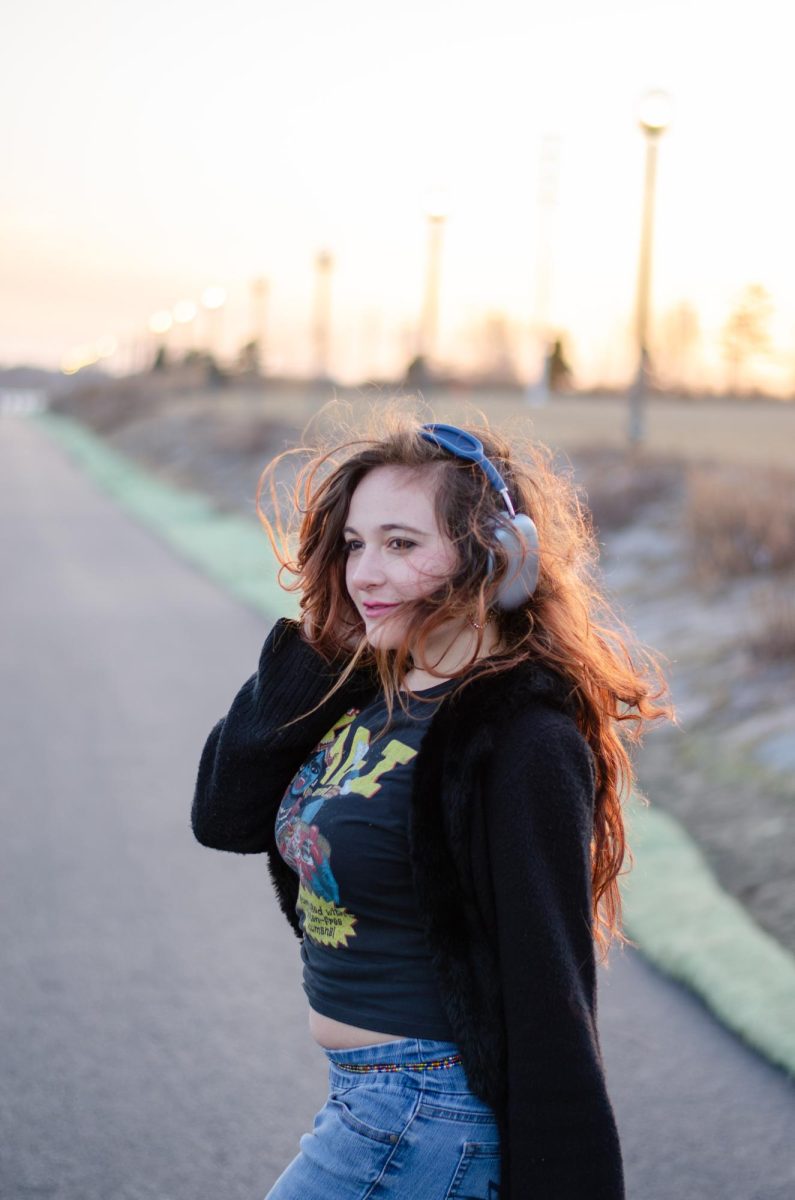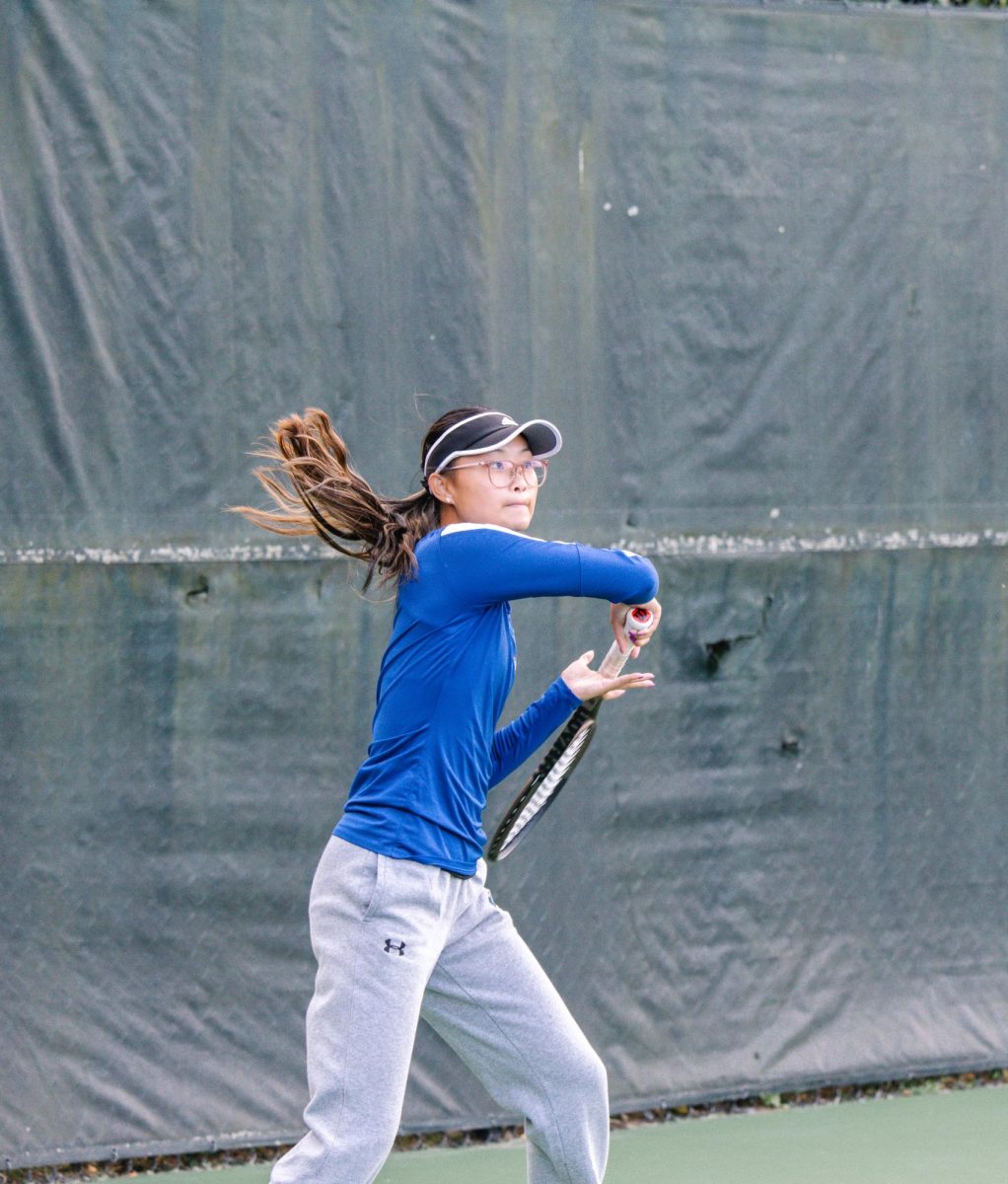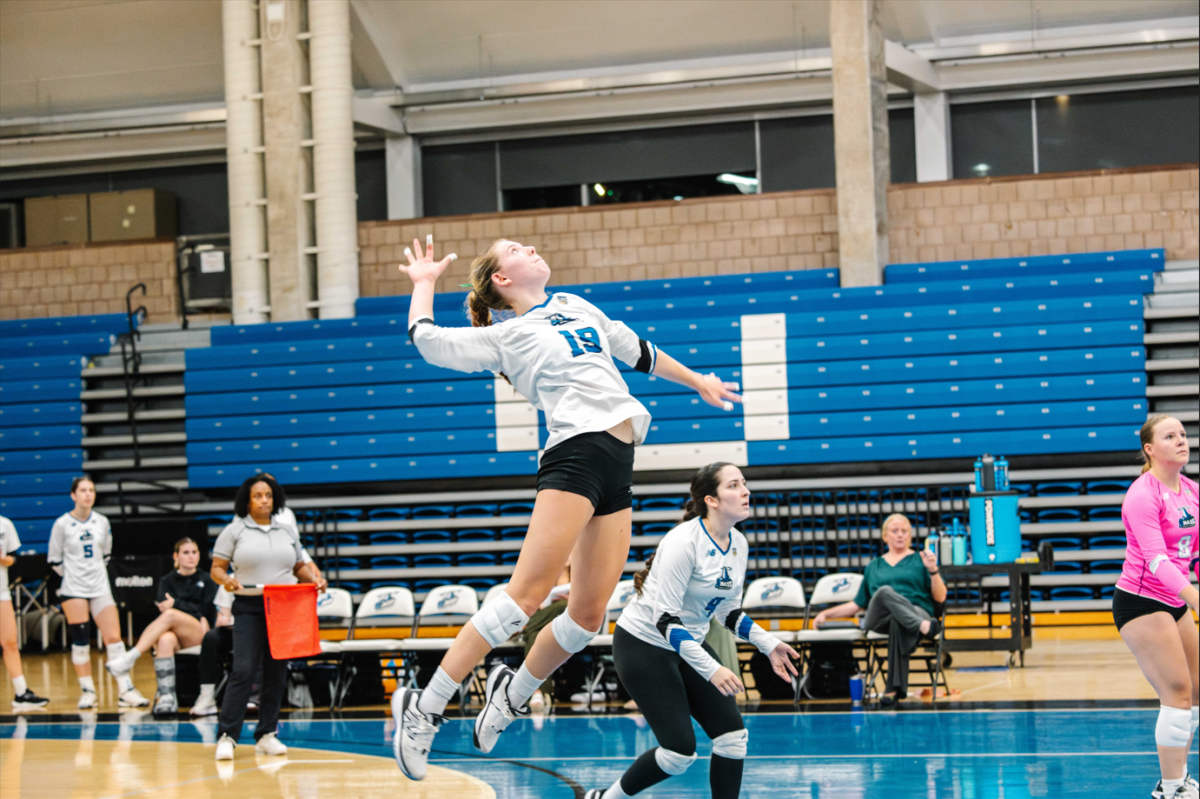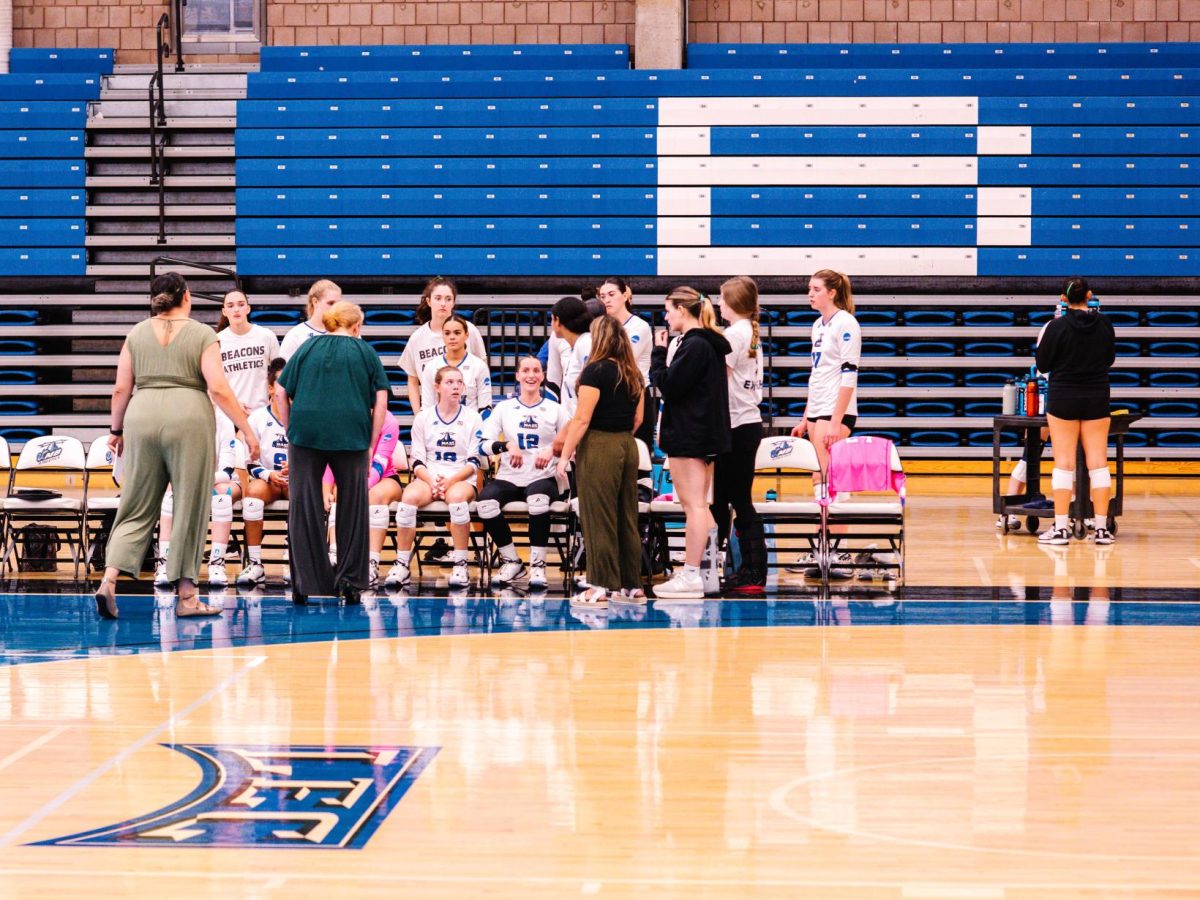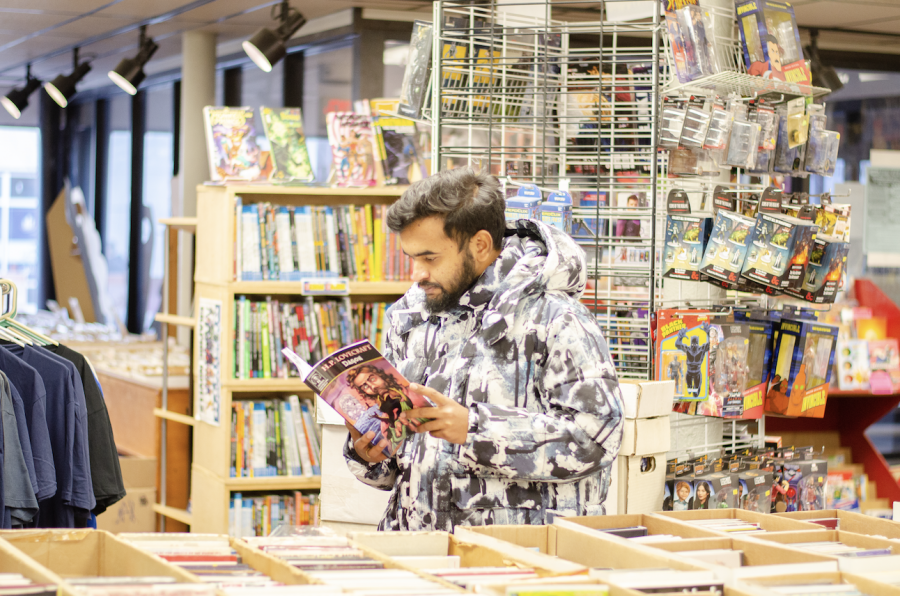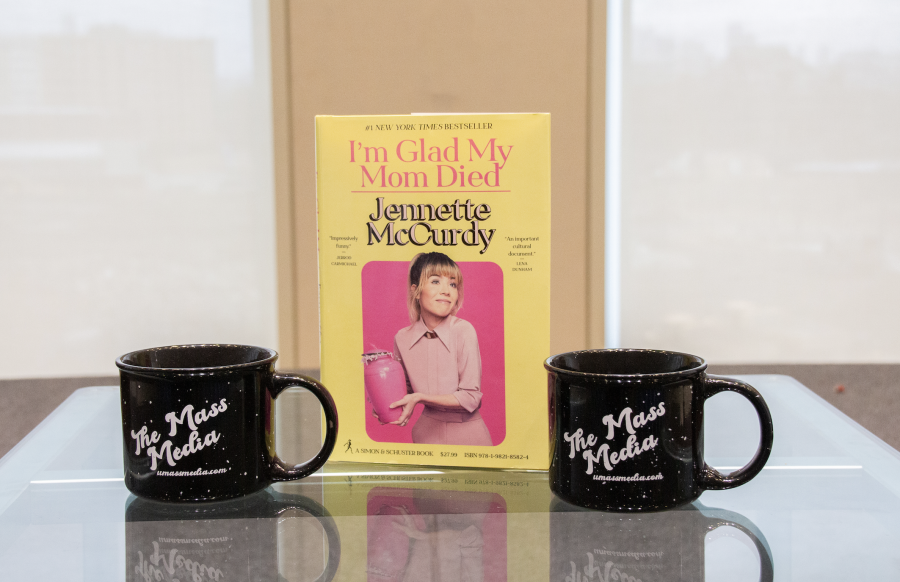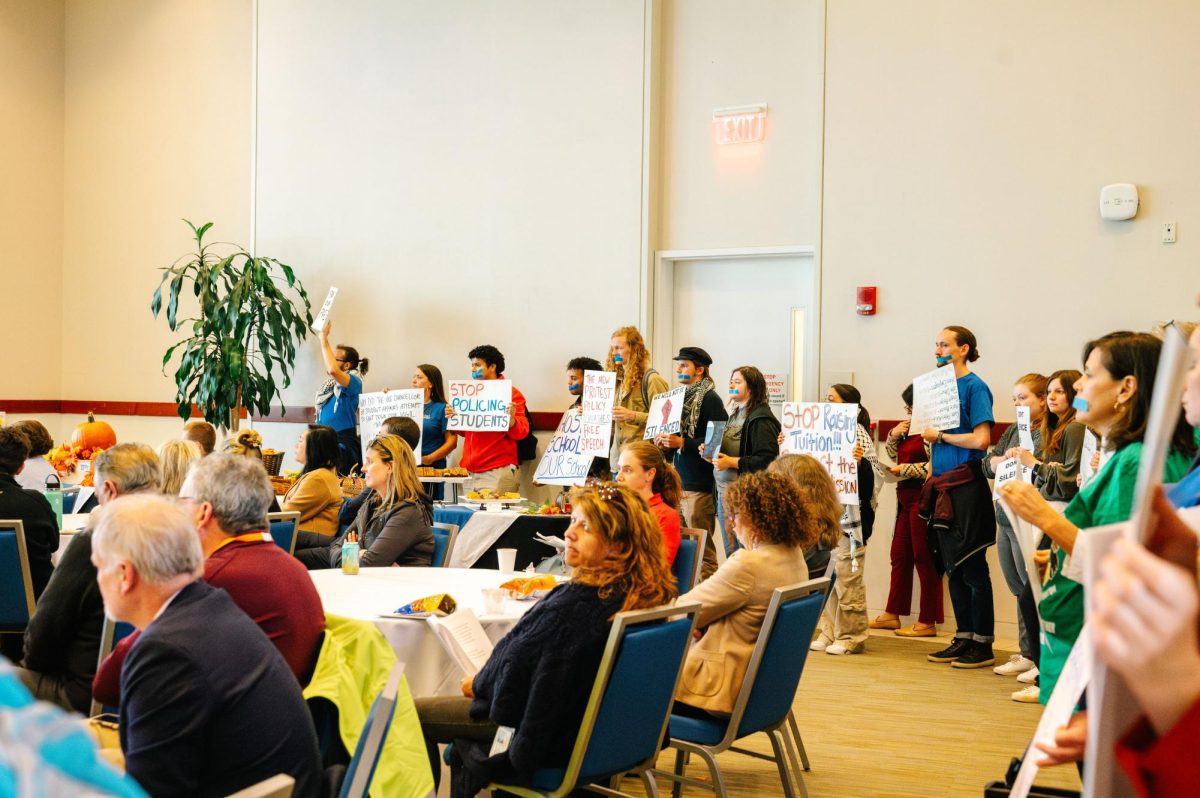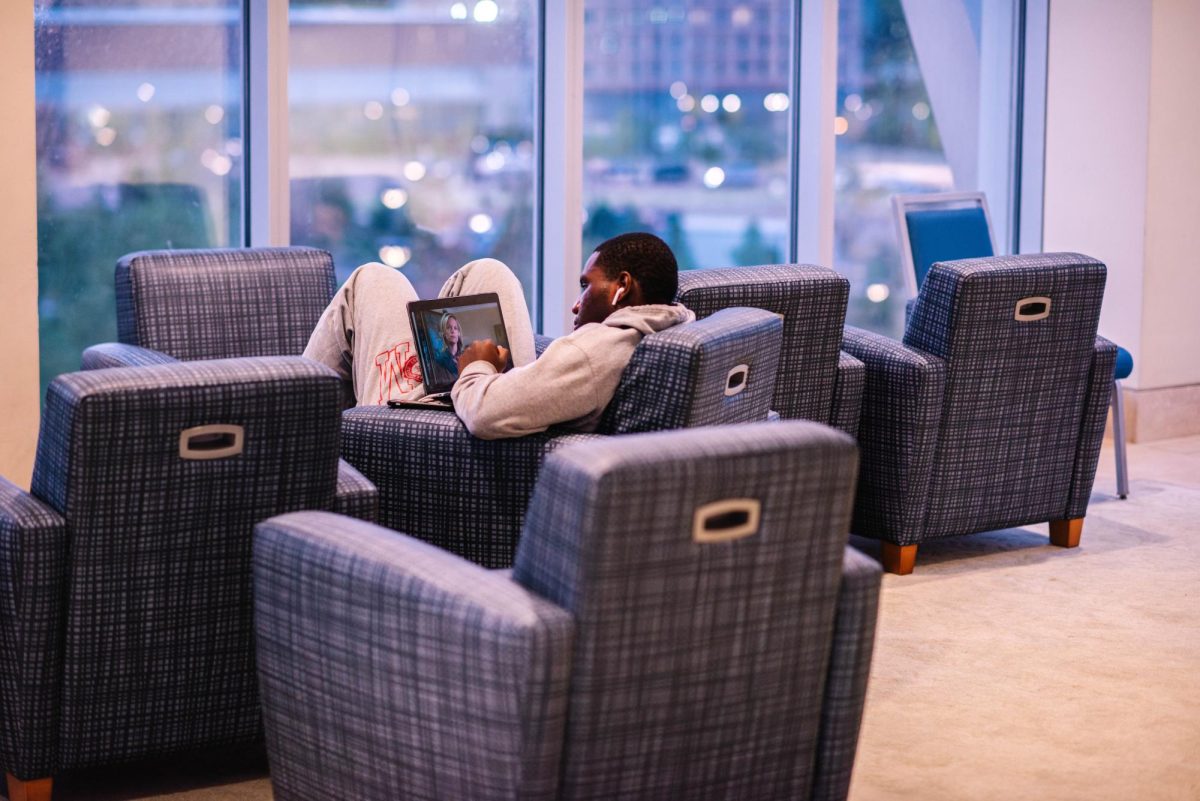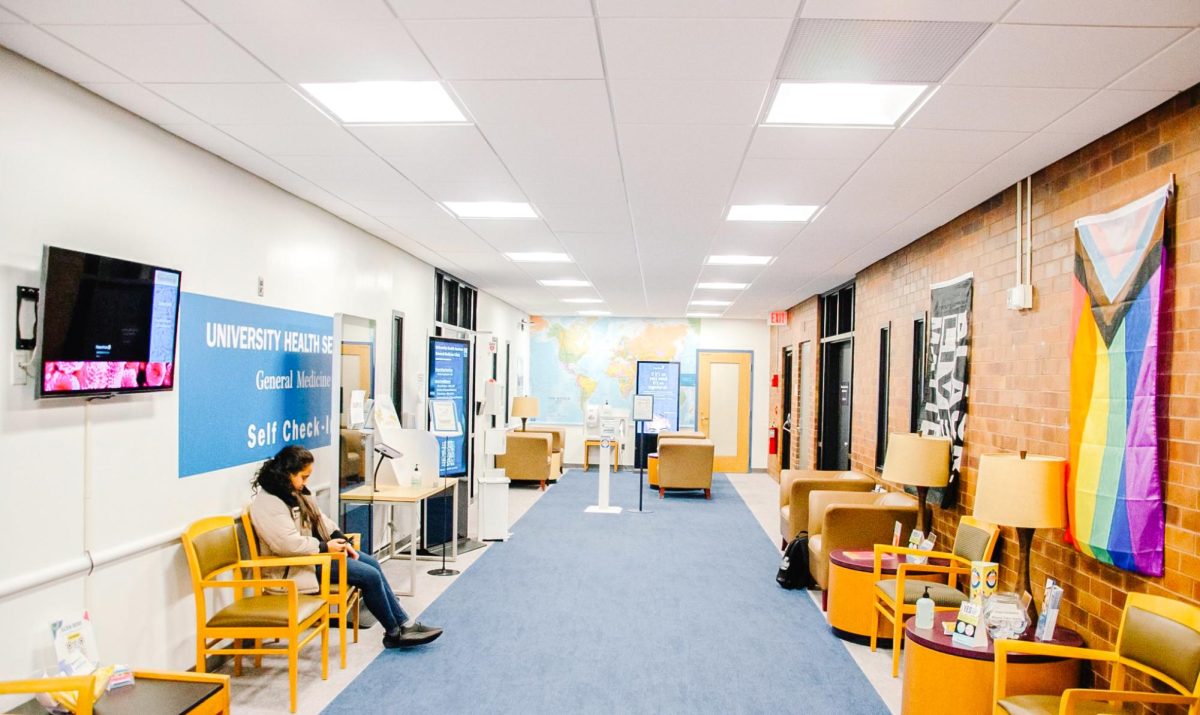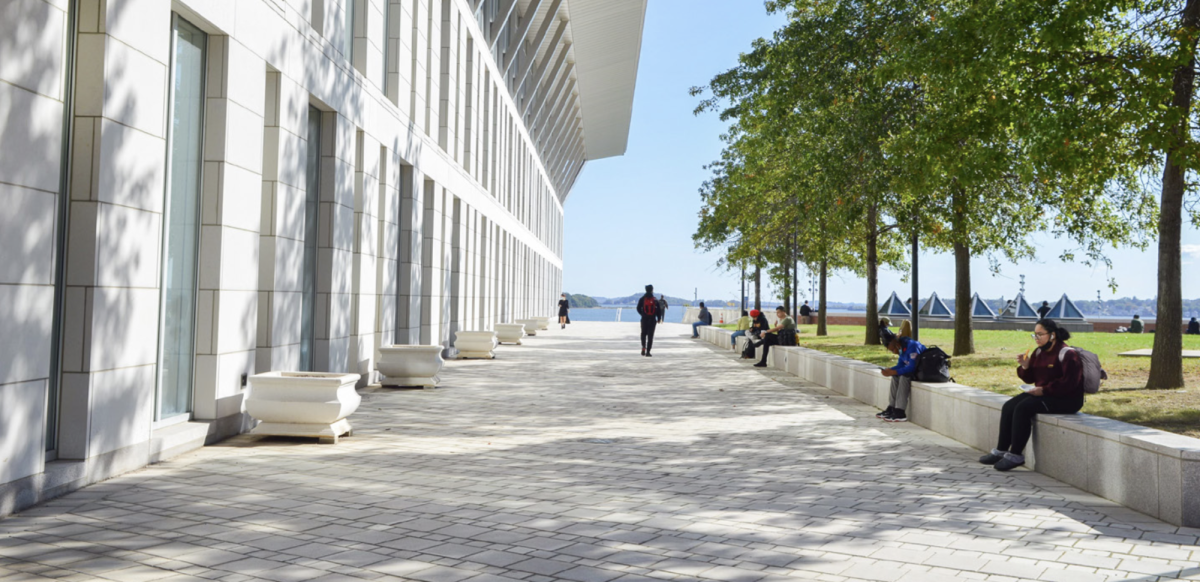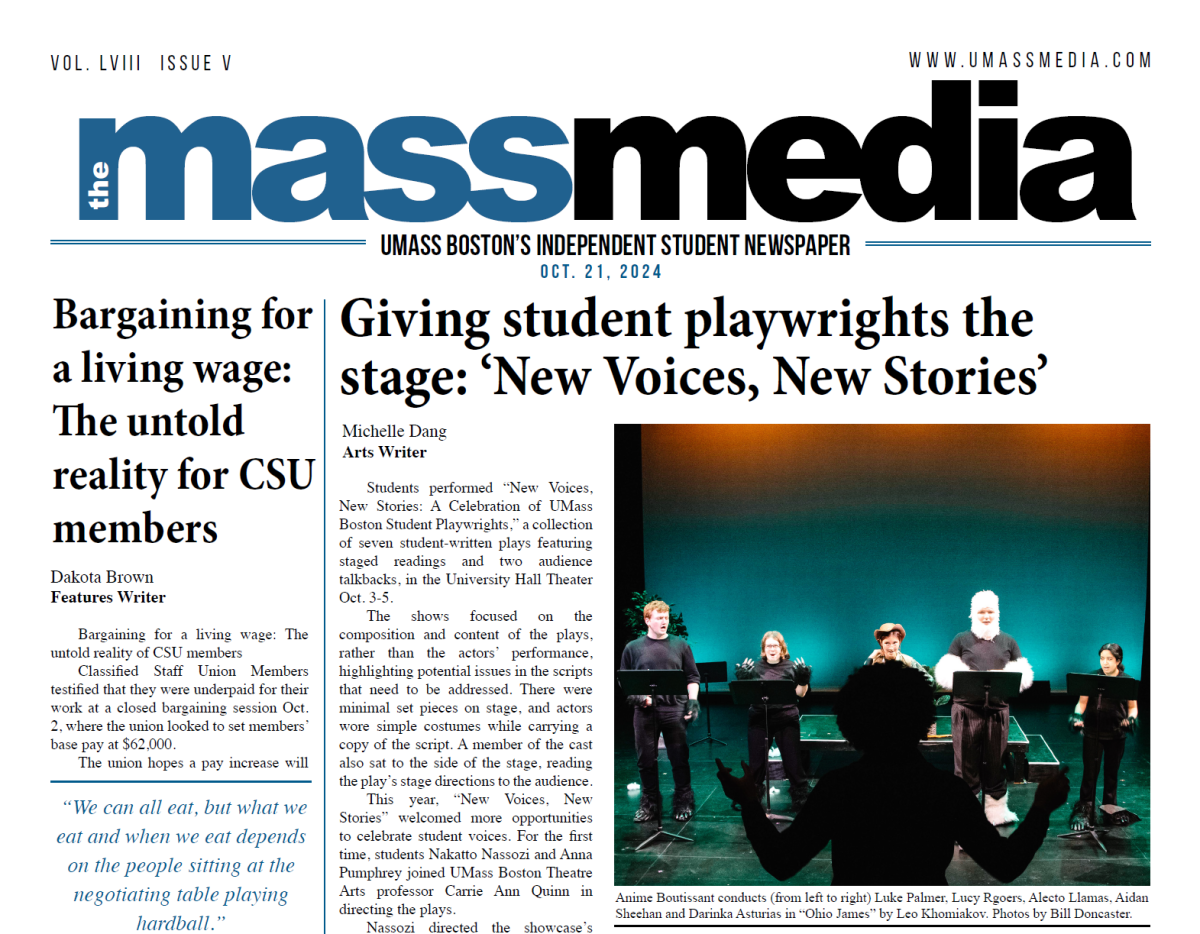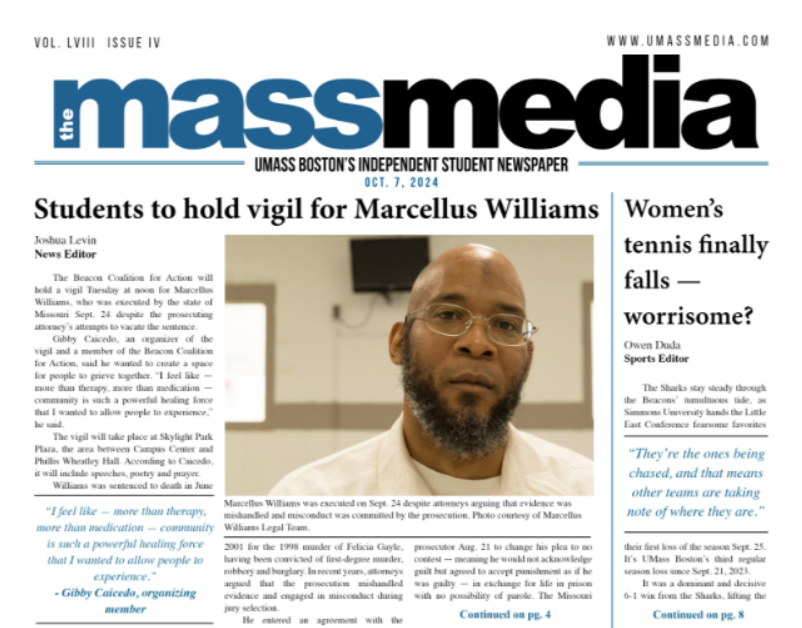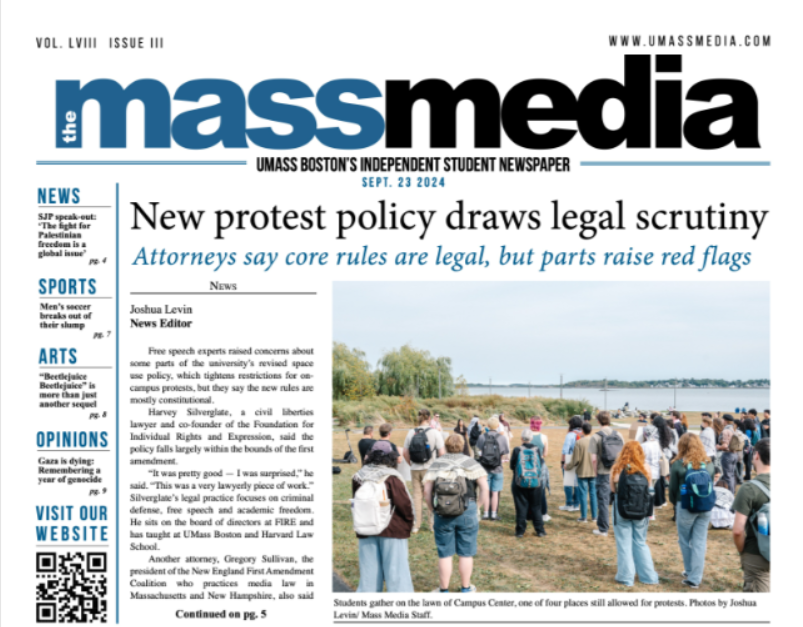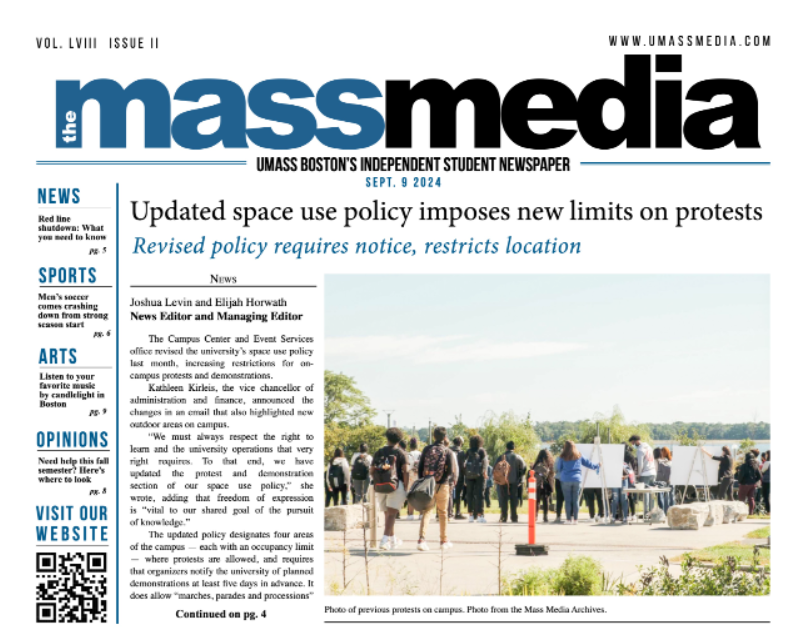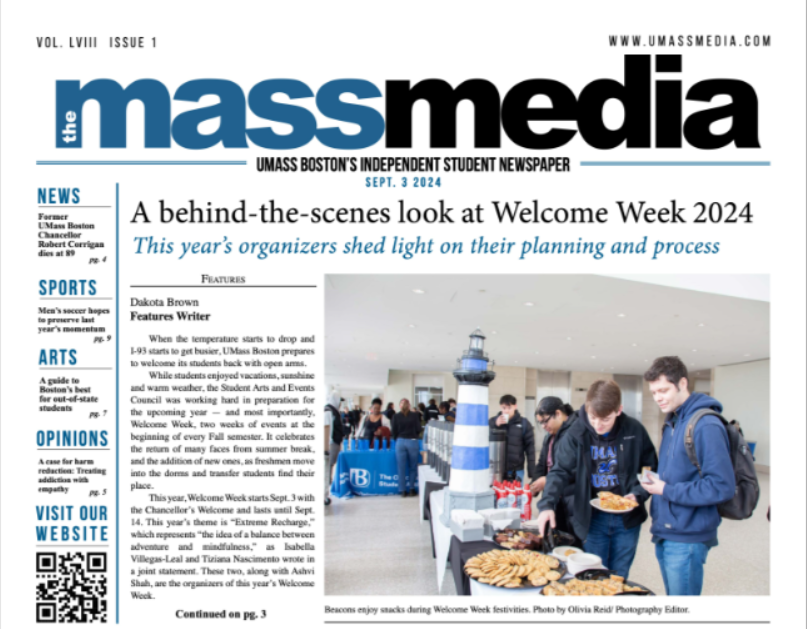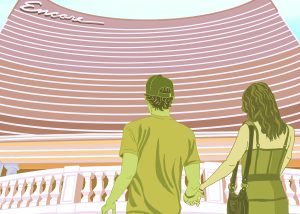Inside the Minds Behind “Honey you can’t keep the props”
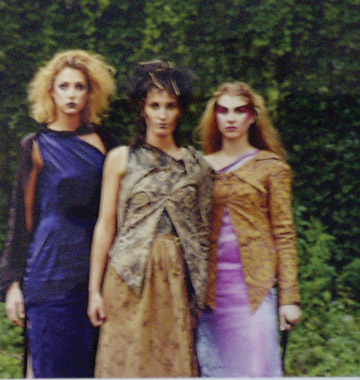
Photographer r.e. hergert collaborates with designer Michelle Fournier to create a scene that is both whimsical and futuristic in this piece.
February 13, 2004
UMass Boston’s Harbor Art Gallery pulled off another successful reception allowing those in attendance to meet a variety of Boston artists of a different sort: those of the fashion world. r.e. hergert, Bill Francisco, and Michelle Fournier stopped in to offer a little explanation as to what they’re all about.
Hergert is the photographer responsible for a series of pieces showing an interesting amalgam of pretty faces and pop culture that takes some of its lead from Andy Warhol. Hergert’s photos are an exercise in cross-processing and digital imagery; an attempt to meld the traditional with the futuristic.
Cross-processing is a method that involves taking chrome film and developing it using a single color. One of the places this is most obviously demonstrated is the blown up contact sheet used on the cover of an album.
Hergert feeds the bits and pieces from the resulting cross-processed negatives into Photoshop and experiments. “It’s not good enough anymore just to take a photo,” she remarks. “Digital manipulation is where work is going.”
Hergert most clearly takes her influence from 60s and 70s pop artists like the aforementioned Warhol and Diane Arbis. In explaining her goals, she says, “I’m just trying to play with images. Everything’s been done under the sun.”
Bill Francisco, the architect whose thesis is on display, has taken traditional materials such as steel, glass, and concrete, and created an estimated $30 million design house that would incorporate all elements of Fournier’s business. Francisco has strived to build a monument that reflects the fact that “the essence of who we are remains constant.”
Envisioning “models in the sky,” Francisco wanted a building that not only embodied efficiency and resiliency but “the pressures of image.” With a double-layered window system that is “fenestrated,” or textured, it creates an optical illusion and a futuristic feel.
A simple, crude model, sitting off to the side, with a mock-up of Fournier’s “house” and surrounding pillars representing a studio and additional facilities, is the egg from which sprouted the state-of-the-art GPS printed site photos, 3D virtual interior design, and scale model of the site. Hearing Francisco wax philosophical about the symmetry between Fournier’s style and her theoretical “house of style” suddenly makes it easier to understand the fantastical open-air walkways that hang dizzying stories off the ground and the 165 foot wall backing the entire project.
Meanwhile, Fournier remained elusive. Refusing to put up an artist statement, she feels that her work speaks for itself. Her “Who’s the freak?” collection, with its dark colors and thick, antique textures, provokes as many questions as it answers. When I finally caught up with her, she admitted that she never looks at magazines to see what the current trends are. Fournier remains focused on her work, stating, “You’re only as good as your latest collection.”
Dealing mostly with small boutiques, her creations are entirely handmade, giving each piece a unique feel. Having worked with Geoffrey B. Small and Vintage Fresh, she described her first forays into fashion, buying old clothes and reworking the pieces on her sewing machine. Though she’s primarily interested in working with creative brands, she still likes big names such as Vivian Westwood.
When asked the sources of her inspiration, Fournier thought for a bit conceding that it’s nearly impossible to sum up all of her experiences into an easy answer and simply said, “It’s my world.”

